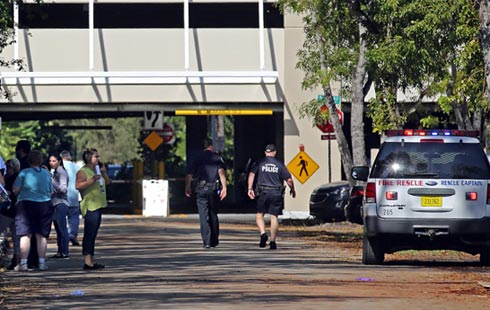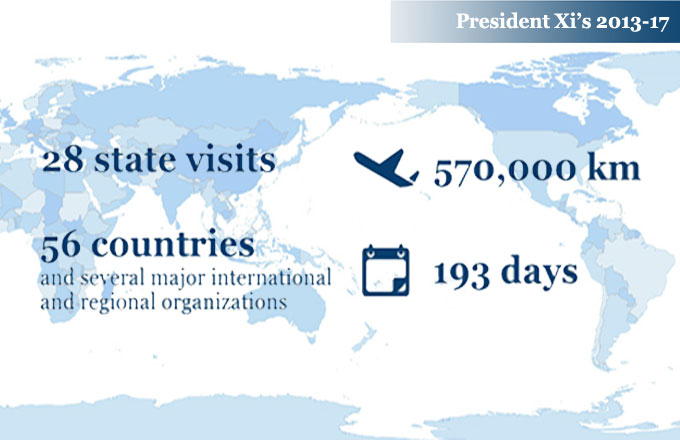DPRK fires 2 ballistic missiles to protest THAAD deployment
SEOUL -- The Democratic People's Republic of Korea (DPRK) on Wednesday fired two ballistic missiles into east waters in an apparent protest against the deployment in the Republic of Korea (ROK) of Terminal High Altitude Area Defense (THAAD).
Two DPRK ballistic missiles, estimated to be Rodong, were fired eastward from South Hwanghae province at about 7:50 a.m. local time, but one exploded with an unsuccessful launch, the ROK's Joint Chiefs of Staff (JCS) said. The other flew around 1,000 km.
The DPRK missile reportedly landed in Japan's exclusive economic zone (EEZ), marking the first time that a DPRK missile fell on Japanese waters.
Citing the ROK military authorities, Yonhap news agency reported that the landing in Japanese waters was aimed at displaying its missile capability of reaching US troops in Japan as well as in the ROK.
The test-firing came after the DPRK test-fired two medium-range Rodong ballistic missiles and one shorter-range Scud missile on July 19 to protest against the decision between Seoul and Washington to deploy THAAD in the ROK's soil.
On July 8, the ROK and the US abruptly announced an agreement to deploy one THAAD battery by the end of next year. Five days later, the deployment site was designated at Seongju county, some 250 km southeast of Seoul.
One day after the announcement, Pyongyang test-fired a submarine-launched ballistic missile (SLBM) off its east coast to demonstrate against the THAAD deployment decision. In times of military conflict, it is hard to detect and track SLBM with THAAD's X-band radar.
THAAD is incapable of intercepting Rodong and Scud missiles targeting the ROK as the DPRK missiles travel at an altitude of 20-30 km. The US anti-missile system is designed to shoot down missiles at a much higher altitude of 40-150 km.
The DPRK military has threatened to take"physical measures"against the THAAD deployment site. On July 19, Seoul's unification ministry said Pyongyang appeared to have been in a state of conducting another nuclear test at any time given increased activity in its main Punggye-ri nuclear test site.
All of the four DPRK underground nuclear tests had been carried out in Punggye-ri since 2006. The latest took place in January this year.
China and Russia have strongly opposed to THAAD in the ROK as it raises tensions in Northeast Asia.
The US missile defense system also breaks strategic balance in the region and severely damages security interests of China and Russia as the X-band radar can peer into Chinese and Russian territories.
Seoul claims that it will adopt the terminal mode radar with a detectable range of 600-800km, but it can be converted at any time into a forward-based mode capable of detecting at least 2,000 km. The modified version allegedly needs no conversion, spotting as far as 3,000-4,000 km.
The ROK's capital city and its adjacent metropolitan area cannot be protected by the THAAD battery as its interceptors have a maximum range of 200 km Seongju is about 250 km away from the capital.
It's a clear evidence to support a claim that THAAD in the ROK is not aimed at intercepting DPRK missiles, but supervising and pressuring China and Russia as part of US efforts at its Pivot-to-Asia strategy.
Two DPRK ballistic missiles, estimated to be Rodong, were fired eastward from South Hwanghae province at about 7:50 a.m. local time, but one exploded with an unsuccessful launch, the ROK's Joint Chiefs of Staff (JCS) said. The other flew around 1,000 km.
The DPRK missile reportedly landed in Japan's exclusive economic zone (EEZ), marking the first time that a DPRK missile fell on Japanese waters.
Citing the ROK military authorities, Yonhap news agency reported that the landing in Japanese waters was aimed at displaying its missile capability of reaching US troops in Japan as well as in the ROK.
The test-firing came after the DPRK test-fired two medium-range Rodong ballistic missiles and one shorter-range Scud missile on July 19 to protest against the decision between Seoul and Washington to deploy THAAD in the ROK's soil.
On July 8, the ROK and the US abruptly announced an agreement to deploy one THAAD battery by the end of next year. Five days later, the deployment site was designated at Seongju county, some 250 km southeast of Seoul.
One day after the announcement, Pyongyang test-fired a submarine-launched ballistic missile (SLBM) off its east coast to demonstrate against the THAAD deployment decision. In times of military conflict, it is hard to detect and track SLBM with THAAD's X-band radar.
THAAD is incapable of intercepting Rodong and Scud missiles targeting the ROK as the DPRK missiles travel at an altitude of 20-30 km. The US anti-missile system is designed to shoot down missiles at a much higher altitude of 40-150 km.
The DPRK military has threatened to take"physical measures"against the THAAD deployment site. On July 19, Seoul's unification ministry said Pyongyang appeared to have been in a state of conducting another nuclear test at any time given increased activity in its main Punggye-ri nuclear test site.
All of the four DPRK underground nuclear tests had been carried out in Punggye-ri since 2006. The latest took place in January this year.
China and Russia have strongly opposed to THAAD in the ROK as it raises tensions in Northeast Asia.
The US missile defense system also breaks strategic balance in the region and severely damages security interests of China and Russia as the X-band radar can peer into Chinese and Russian territories.
Seoul claims that it will adopt the terminal mode radar with a detectable range of 600-800km, but it can be converted at any time into a forward-based mode capable of detecting at least 2,000 km. The modified version allegedly needs no conversion, spotting as far as 3,000-4,000 km.
The ROK's capital city and its adjacent metropolitan area cannot be protected by the THAAD battery as its interceptors have a maximum range of 200 km Seongju is about 250 km away from the capital.
It's a clear evidence to support a claim that THAAD in the ROK is not aimed at intercepting DPRK missiles, but supervising and pressuring China and Russia as part of US efforts at its Pivot-to-Asia strategy.
Related Stories
- DPRK fires 1 ballistic missile into east waters
- Japan heightens security alert, protests latest DPRK missile launch
- Chinese foreign minister meets DPRK's counterpart in Laos
- DPRK plane makes forced landing in Northeast China city
- DPRK top leader guides ballistic rocket test-firing
- THAAD news met by DPRK missile launches
- Japan protests against DPRK's missile launches
Photo
Most Viewed in 24 Hours




























